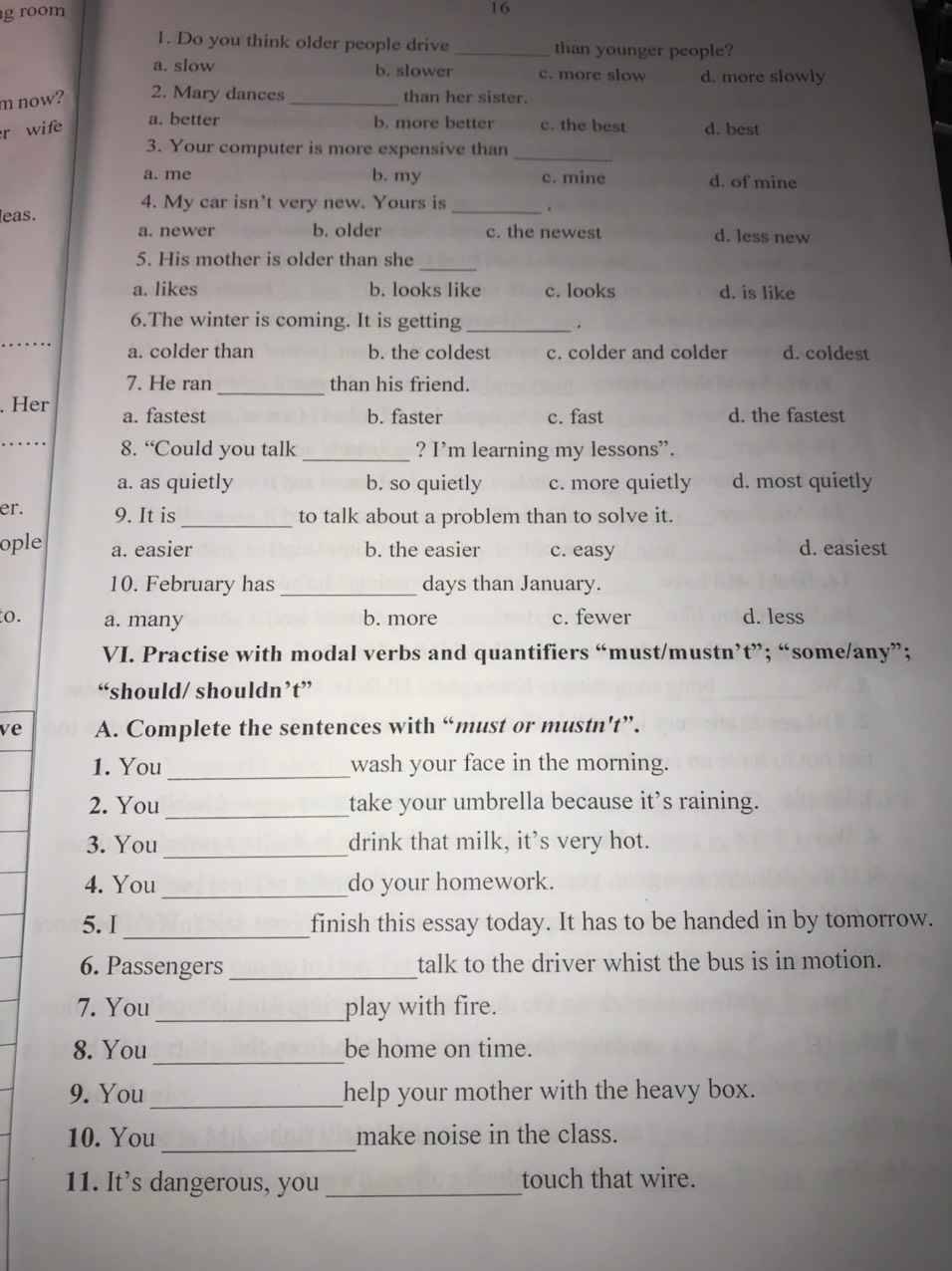Question 7: Read the following passage and choose the best answer. Write your answers in the numbered blanks provided below the passage. (20point)
As Christmas evolved in the United States, new customs were adopted and many old ones were reworked. The legend of Santa Claus, for example, had origins in Europe and was brought by Dutch settlers to New York in the early 18th century. Traditionally, Santa Claus - from the Dutch Sinter Klaas - was depicted as a tall, dignified, religious figure riding a white horse through the air. Known as Saint Nicholas in Germany, he was usually accompanied by Black Peter, an elf who punished disobedient children. In North America he eventually developed into a fat, jolly old gentleman who had neither the religious attributes of Saint Nicholas nor the strict disciplinarian character of Black Peter.
Santa’s transformation began in 1823, when a New York newspaper published the poem A Visit from Saint Nicholas, which Clement Clark Moore had written to amuse his daughter. The poem introduced many Americans to the story of a kindly saint who flew over housetops in a reindeer-drawn sleigh. Portraits and drawings of Santa Claus by American illustrator Thomas Nast further strengthened the legend during the second half of the 19th century. Living at the North Pole and assisted by elves, the modern Santa produced and delivered toys to all good children. By the late 19th century he had become such a prominent figure of American folklore that in 1897, when Virginia O’Hanlon wrote to the New York Sun newspaper asking if Santa was real, she received a direct answer: “Yes, Virginia, there is a Santa Claus”.
61. Who brought the legend of Santa Claus to the USA according to the passage?
A. Sinter Klaas B. Saint Nicholas C. A German D. Dutch settlers
62. Santa Claus was traditionally described as a________.
A. tall man who could walk through the air. B. fat, jolly, old man.
C. religious figure. D. fat man riding a white horse.
63. Santa Claus in North America was depicted as________.
A. a man with the strict disciplinarian character of Black Peter.
B. a good old man with less religious character.
C. one with religious attributes of Saint Nicholas.
D. a jolly man on horseback.
64. Who was Black Peter?
A. an elf accompanying Saint Nicholas. B. an elf who rode a white horse.
C. one of the disobedient children. D. a popular traditional figure.
65. What word is closest in meaning to “attributes”?
A. symbols of a person B. natural qualities C. effects D. outer appearance
66. Where did the legend of Santa Claus come from?
A. the North Pole B. Europe C. North America D. the City of New York
67. 1823 was mentioned as a year when________.
A. Clement Clark Moore wrote his first poem
B. Clement Clark Moore’s poem made him popular
C. Saint Nicholas visited New York
D. the image of Santa Claus was transformed
68. According to Clement Clark Moore’s poem
A. Santa Claus had nothing different in appearance from the traditional one.
B. Santa Claus had wings and could fly.
C. Santa Claus liked poetry.
D. Santa Claus was a kindly saint who flew over housetops in a sleigh.
69. The answer “Yes, Virginia, there is a Santa Claus” is an illustration for the fact that________.
A. the New York Sun was popular with children.
B. Santa Claus was a prominent figure at that time.
C. newspapers are unreliable.
D. Virginia O’Hanlon was a reader of the New York Sun
70. Which of the following statements is TRUE?
A. Santa Claus was an imaginary old man created by artists based on traditional figures.
B. Living in the North Pole, Santa Claus visited children at Christmas.
C. Santa Claus was a real figure living in northern America.
D. Santa Claus was a story based on Saint Nicholas and Black Peter.

